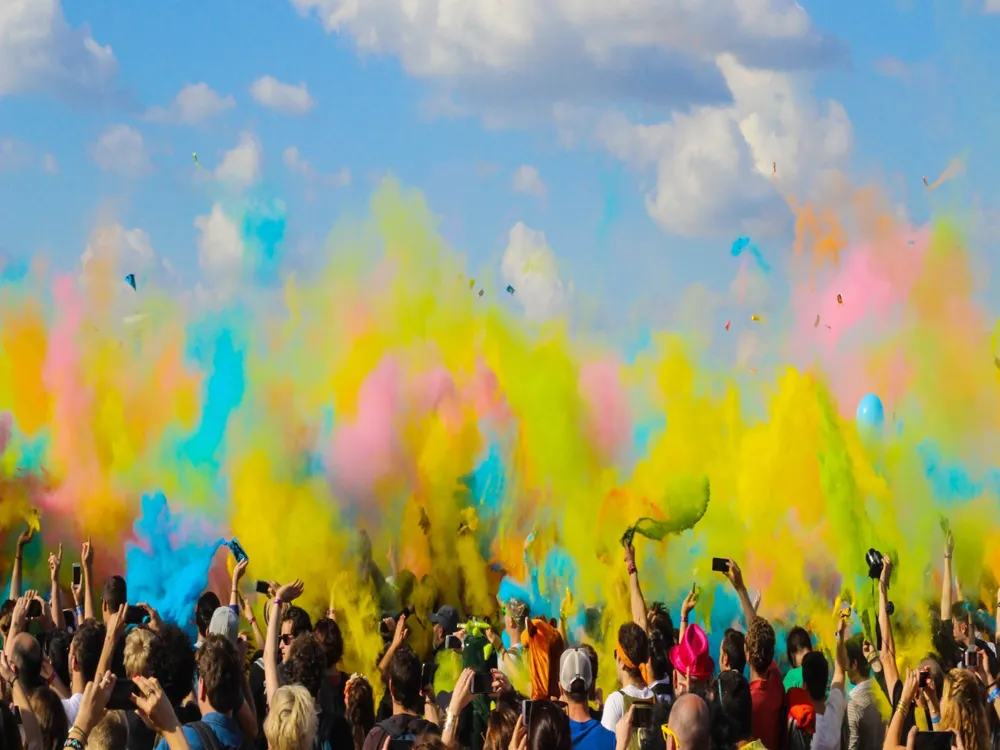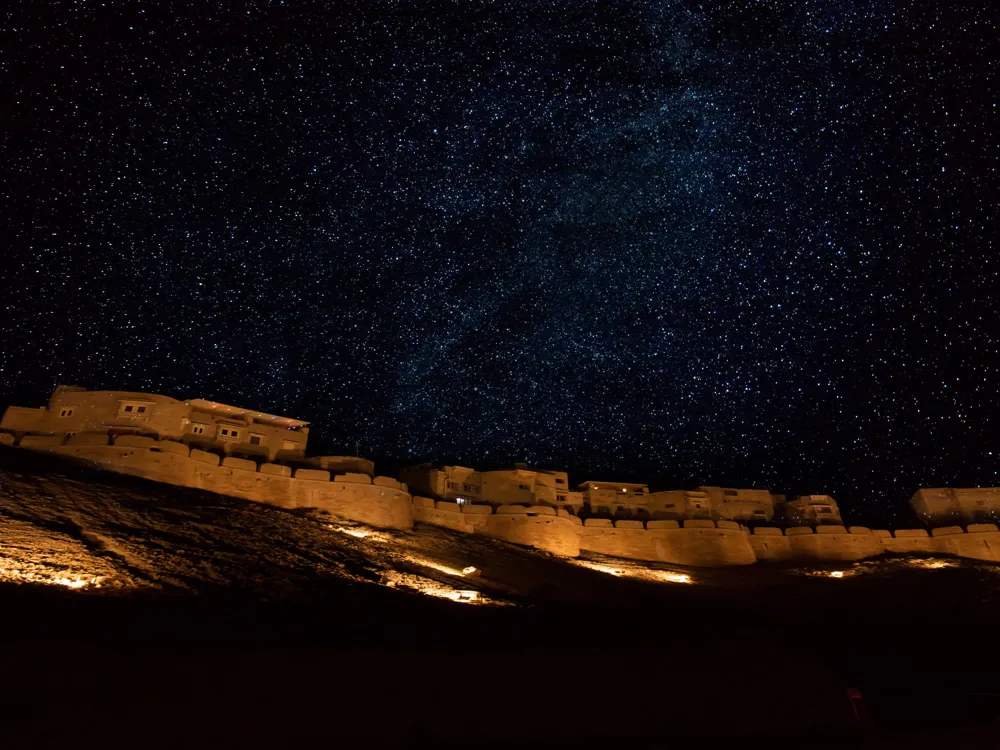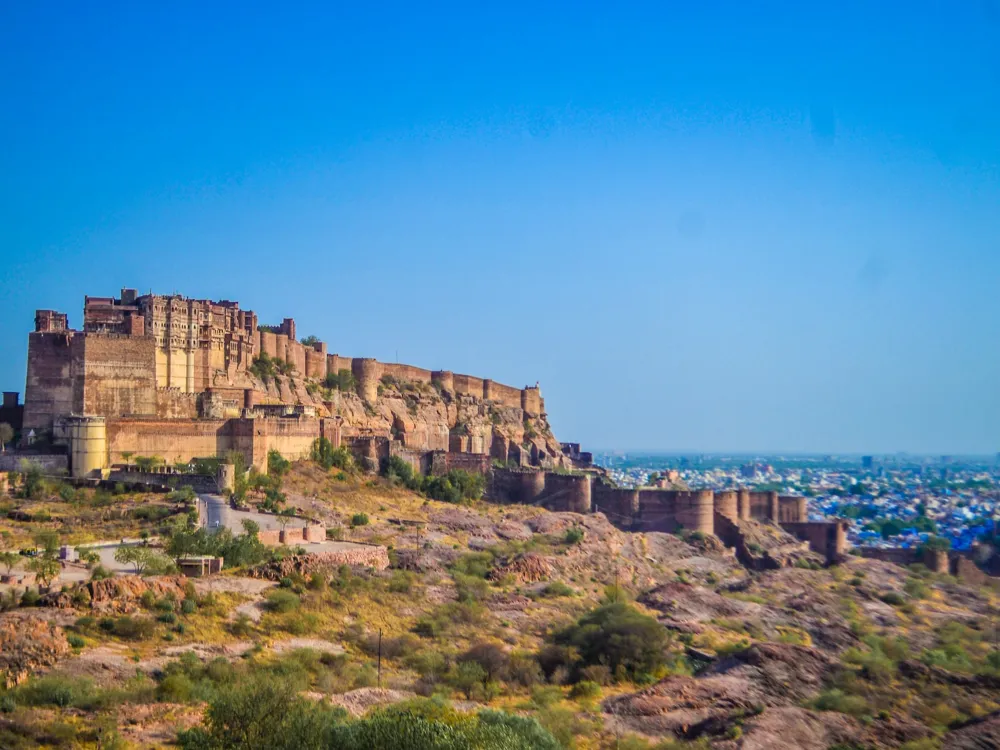Lallgarh Palace in Bikaner, Rajasthan, is a beacon of architectural brilliance and historical significance. Built by Maharaja Ganga Singh in the early 20th century, the palace is a stunning example of Indo-Saracenic architecture, blending Mughal, Rajput, and European styles. The palace, named after Maharaja Lall Singh, father of Maharaja Ganga Singh, stands as a symbol of the royal heritage of Bikaner. The structure's red sandstone façade exudes grandeur and is adorned with intricate filigree work, latticed windows, and sprawling courtyards. The palace’s interiors are equally mesmerizing, with elaborately decorated halls, luxurious rooms, and a rich collection of Rajasthani artwork. The palace also houses the Sadul Museum, showcasing the lives of three successive kings of Bikaner. The museum's collection includes photographs, trophies, and personal artifacts of the royal family. Apart from its historical and architectural significance, Lallgarh Palace has been a witness to several key events in India's history. It has hosted many distinguished guests, including British royalty and prominent Indian leaders. Today, part of the palace has been converted into a luxury hotel, offering visitors a chance to experience royal living. This transformation has ensured the preservation of the palace's legacy, making it a living heritage site. The architecture of Lallgarh Palace is a testament to the ingenious fusion of different architectural styles prevalent during the British Raj. Designed by the British architect, Sir Samuel Swinton Jacob, the palace showcases a harmonious blend of Rajput, Mughal, and European elements. The red sandstone used in its construction was sourced locally, adding to the palace's distinctive appeal. One of the most striking features of the palace is its intricate lattice work, which is not only aesthetically pleasing but also serves a functional purpose by allowing cool air to flow through the interiors, making the hot desert climate more bearable. The palace's layout includes numerous pillars, arches, and balconies, each detailed with exquisite craftsmanship. The courtyards, which are a signature element of Rajasthani architecture, add to the palace's splendor. The interiors of the palace are equally magnificent, with detailed frescoes, gold leaf paintings, and ornate ceilings. The Durbar Hall, a key feature of the palace, is particularly noteworthy for its grandeur and is often used for royal functions and events. The use of stained glass windows and intricately carved woodwork in the interiors further enhances the palace's beauty, making it a true masterpiece of architectural ingenuity. The ideal time to visit Lallgarh Palace is between October and March, when the weather in Bikaner is pleasant, making it conducive for exploring the palace and its surroundings. Opt for a guided tour to gain deeper insights into the palace's history, architecture, and the royal family's legacy. Experienced guides provide fascinating anecdotes and lesser-known facts about the palace. Photography is allowed in most areas of the palace, but it's advisable to check for any restrictions. The palace's architecture and gardens provide a picturesque backdrop for photography enthusiasts. There is no strict dress code for visiting Lallgarh Palace, but it is recommended to dress modestly out of respect for the cultural and historical significance of the site. Lallgarh Palace is well-connected and easily accessible. Bikaner is well-served by road, rail, and air: Read More:Overview of Lallgarh Palace, Bikaner, Rajasthan
Architecture of Lallgarh Palace
Tips When Visiting Lallgarh Palace
Best Time to Visit
Guided Tours
Photography
Dress Code
How To Reach Lallgarh Palace
Lallgarh Palace
Bikaner
Rajasthan
₹ 15,250 onwards
View bikaner Packages
Weather :
Label : Must Visit
Tags : Forts & Palaces
Timings : 10:00 AM - 5:00 PM (Closed on Sunday)
Time Required : 1-2 days
Entry Fee : Visitor Entry Fee: INR 20
Stay at the Heritage Hotel
Lalgarh Heritage Hotel: INR 7000 to INR 16000
Lakshmi Niwas Heritage Hotel: INR 8000 to INR 35000
Planning a Trip? Ask Your Question
Also Refered As:
Laxmi Nivas Palace
Bikaner Travel Packages
View All Packages For Bikaner
Top Hotel Collections for Bikaner

Private Pool

Luxury Hotels

5-Star Hotels

Pet Friendly
Top Hotels Near Bikaner
Other Top Ranking Places In Bikaner
View All Places To Visit In bikaner
View bikaner Packages
Weather :
Label : Must Visit
Tags : Forts & Palaces
Timings : 10:00 AM - 5:00 PM (Closed on Sunday)
Time Required : 1-2 days
Entry Fee : Visitor Entry Fee: INR 20
Stay at the Heritage Hotel
Lalgarh Heritage Hotel: INR 7000 to INR 16000
Lakshmi Niwas Heritage Hotel: INR 8000 to INR 35000
Planning a Trip? Ask Your Question
Also Refered As:
Laxmi Nivas Palace
Bikaner Travel Packages
View All Packages For Bikaner
Top Hotel Collections for Bikaner

Private Pool

Luxury Hotels

5-Star Hotels

Pet Friendly





















